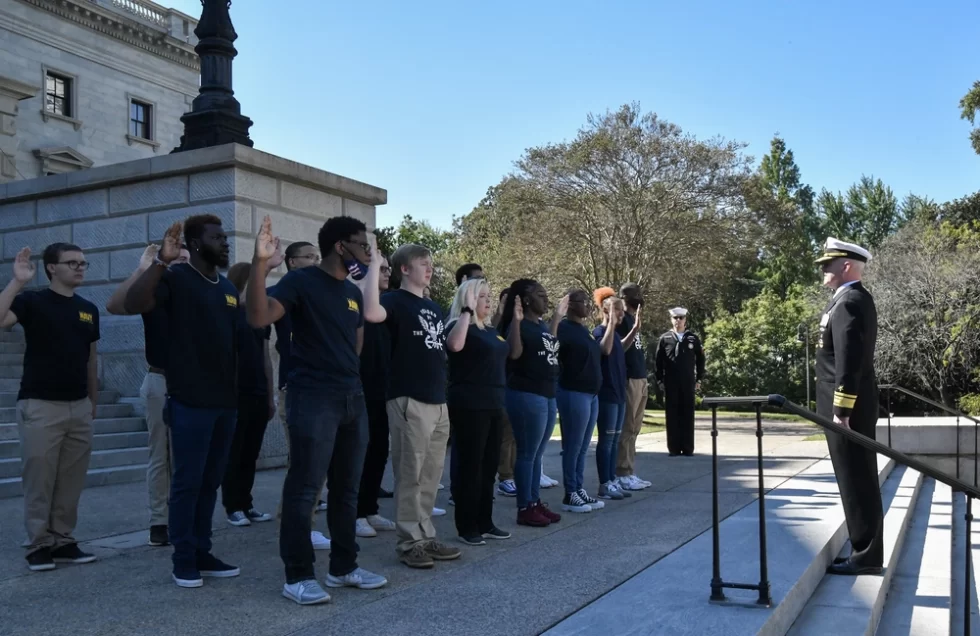Record incentives fail to bolster low recruitment numbers
Since the start of the pandemic, the military has been boasting what they call a “recruit’s market” ripe with opportunity and incentives that — on paper at least — should be attracting recruits to recruitment stations like flies to garbage. Unfortunately, the flies are proving to be quite uninterested in the trash that the military is offering.

The commander of the Air Force Recruiting Service, Maj. Gen. Edward W. Thomas Jr. said, “In real estate, you talk about buyer’s and seller’s markets. You know, this is a recruiting market right now. There are good opportunities to serve and good incentives to do so.”
Military recruitment fell steeply during the pandemic. All active duty branches met their goal, but reserve components failed to do so annually. Now, even the Army and Navy are falling short on their numbers with the rest of the branches just barely hitting theirs.
The military believes that many factors are at play contributing to these dismal recruitment numbers.
Hunting grounds were closed to recruiters
From 2019 to just recently, public high schools were operating remotely with no in-person classed. This means that military recruiters could no longer solicit children at their place of learning.
In 2018, the Institute for Defense Analyses issued a report that emphasized the importance of high school level recruitment and the invaluable nature of that pipeline.
Military aged citizens are neither willing or able
“Really… it’s declining eligibility, declining propensity or interest in serving and declining trust in government,” said Thomas.
He continued, “Today, 77% of American youth aged 17 to 24 will not qualify to serve the United States military without a waiver, 77%. That’s based on a variety of different reasons, from weight to medical issues to academic issues to behavioral issues, mental health issues. It’s a wide variety with 77% don’t qualify without a waiver.”
The abortion of a withdrawal from Afghanistan
The United States military hasn’t failed so flagrantly and so publicly since Saigon, circa 1975. Gen. Thomas does admit that the botched pull out and the American perception of it’s handling, and the management of the aftermath may have impacted recruitment since it happened on live TV, but seriously doubts that it’s “one of the primary drivers.”
The Economy is just too good
According to The Eleventh Quadrennial Review of Military Compensation, “a 10 percent decrease in the civilian unemployment rate will reduce high-quality enlisted recruiting by 2–4 percent.” The report also states that “The recent economic downturn has improved recruiting and retention… However, this improvement is expected to diminish as civilian economic conditions improve.”
To put this in layman’s terms, American citizens currently have too many opportunities that are better than military service. And even with record high bonuses, the instant cash isn’t worth the sacrifice.
Record high suicides among troops
The USS George Washington has had 10 suicides in 10 months. Suicides in Alaska are so high that congress is investigating. The Department of Defense has revealed a congressionally mandated panel of experts to look into active duty suicides and immediately turn their attention to gun safety rather than factors contributing to poor mental health.
Anyone on the outside looking in might certainly be apprehensive to join an organization that loses more members to suicide due to unchecked sexual assault, abysmal living conditions, and poor treatment than to any other factor.
Obviously, there are a number of factors contributing to the military’s struggle to recruit mentally and physically qualified candidates. While I’m sure that there is no one problem to be blamed, I’m certain than the military as a whole has a lot of work to do internally before qualified prospects return to recruitment stations. Between low moral, high suicide rates, apathy among the youth and toxicity within senior leadership, the military as it stands can only continue to scrape the bottom of the barrel until it turns into a community that young people wish to be a part of once again.






